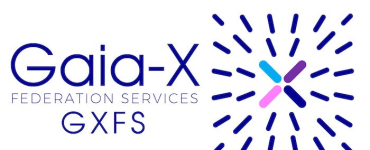Gaia-X is taking shape. Andreas Weiss, GXFS Project Manager and Head of Digital Business Models division at eco – Association of the Internet Industry, talks in an interview on the further development of Gaia-X in line with the needs and problems of users. All visitors to the Hanover Messe (17-21 April, Hall 8 Stand D26) and Cloud Expo Europe (10-11 May in Frankfurt, Booth H040) will be able to experience concrete strategies for data-based business models with Gaia-X live.
Mr Weiss, what is the state of play and the time outlook for the GXFS (Gaia-X Federation Services) work strands?
We are through with all planned works from the first specification phase. Quality Assurance (QA) is still ongoing for some of them, but we have already been able to set up the most important functions in a live environment. We recently held a hybrid GXFS workshop with over 200 participants. At the subsequent hackathon, the community directly implemented a few application scenarios. We will still have some enhancements made from the funding programme in terms of further interoperability and the requirements of the Gaia-X funding projects, but with the transition tos the Eclipse Foundation coming soon, the community will then be in the lead during the year. Our project team will continue to accompany this community-building process with transfer measures for a while.
Which challenges have already been mastered, which still lie ahead?
The major challenge was initially to translate the many ideas from the initial phase of Gaia-X into functional requirements and executable applications – along with the dynamics of the issues surrounding data spaces, data sovereignty, European cloud offerings, edge computing and industrial digital transformation. Therefore, it was important to have a few key points, which I think we have achieved with GXFS. Now it is a matter of making this functional concept of federated services applicable to concrete projects with a data-based added value promise, i.e., providing assistance in integrating these services into one’s functional concepts. There are many commonalities but also many special requirements, be it for health services, finance or administrative services.
How do the GXFS and the work of the AISBL intertwine?
Initially, there were two funding projects under the name GXFS. The German project was launched at the end of 2020 – when the AISBL did not yet formally exist – and the French project in the spring of 2022. At GXFS-DE, we focus on the requirements for the establishment and internal organisation of federations, i.e. identities, catalogue services, service bookings and verification of compliance requirements. GXFS-FR concentrates on the representation of generic cloud services with market-relevant quality requirements and the associated technical validation mechanisms.
Both activities are closely related to the specification work of the AISBL, but we see many more links to other initiatives, especially in the field of industry, science and administration. With the next Manufacturing-X initiative, the concepts of the Industrie 4.0 platform, such as the Asset Administration Shell (AAS) and other ideas from the shop floor (the internal production environment), must also be connectable. The upcoming IPCEI-CIS (Important Project of Common European Interest on Next Generation Cloud Infrastructure and Services) will also make a relevant contribution to this. It is important that the needs and problems of the users are addressed in the further design and that no abstract concept with lots of restrictions and specifications is pushed through.
How do the GXFS and current flagship projects (e.g. the eleven funded by the German Federal Ministry for Economic Affairs and Climate Action – BMWK) interact?
The first GXFS components, such as the Notarisation Service, will soon be used productively in the Catena-X environment. Here, Deutsche Telekom will offer a so-called clearing house service that establishes the connection between the Catena-X subscriber profiles and the Gaia-X trust framework. We also work with the specialist teams to translate the Catena-X specifications for participant onboarding and have a low-code process engine in the GXFS portfolio for this purpose. As far as Gaia-X funding projects are concerned, we work closely with the project leaders via the Gaia-X Hub Germany. For example, we have a wallet task force and regular coordination on functional requirements. Most of the projects were also represented in person at the last GXFS workshop and are just learning how to use the GXFS services.
What are the relationships between the GXFS and other projects such as SCS (Sovereign Cloud Stack)?
We maintain a complementary cooperation in this regard. The SCS is our reference platform for operating the GXFS via the Kubernetes cluster functions. Our entire GXFS demo system runs on SCS and is offered as a standard service by some German cloud providers. Of course, running GXFS is not restricted to infrastructure platforms like SCS, so we built on Kubernetes, but it is important to us that these two developments are well aligned. By the way, the main thing now is to make the offer more widespread – i.e., also away from PowerPoint battles and thousands of pages of specifications – and into real implementation. The market is now also beginning to expect concrete, comprehensible strategies for data-based business models. GXFS provides a functional area for this purpose as a reference implementation, but this must also be transferred into resilient operational concepts together with the implementations of data spaces.
Mr Weiss, thank you very much for the interview.




